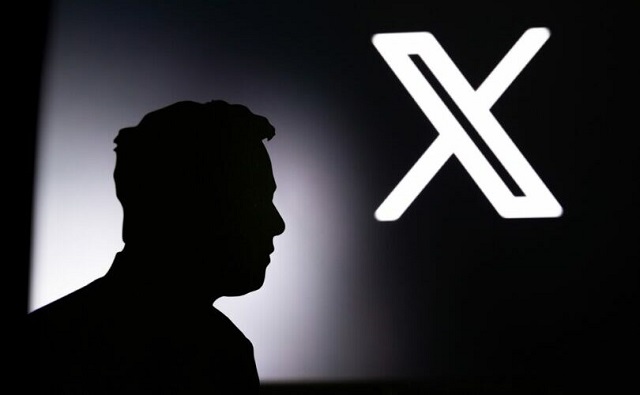International
Study shows ‘X’ suppresses conservative media despite Elon Musk’s pledge to ‘investigate’ bias

From LifeSiteNews
The Media Research Center (MRC) Free Speech America Vice President Dan Schneider believes these ‘shocking’ findings are evidence that there is ‘a radical remnant within X fighting against Elon Musk.’
A recent study shows that the social media platform X (formerly Twitter) disproportionately suppresses conservative media content and elevates left-leaning voices despite owner Elon Musk’s pledge in May to “investigate” this bias.
Media Research Center (MRC) published on Friday the results of a study into how content on X is boosted and suppressed. Remarkably, MRC found that nearly 74 percent of the right-leaning media outlets it reviewed were de-boosted, with considerably lower scores than left-leaning outlets.
By contrast, MRC found that “an overwhelming majority of the left-leaning media outlets” have “highly favorable” visibility scores.
A researcher on X known as “@The1Parzival” determined how each social media account was scored by prompting the Musk-owned AI chatbot Grok with questions that revealed how they were ranked on the “backend” of X. The resulting data, shared with MRC, showed that four metrics shape an account’s “visibility” score: “Mass Appeal” (diversity of followers), “Reputation” (purported reliability), “Toxicity” (potentially offensive content or perceived harmfulness), and “Follower” (follower retention).
Using the ratings firm AllSides’ classification of media outlets by their “perceived” ideological bias on left-to-right scale, MRC found that X gave left-leaning media outlets an average visibility score of 82.64 out of 100, while right-leaning outlets received an average score of 63.56.
This difference has powerful consequences. Grok told MRC that a score of 65 out of 100 on reputation alone, for example, is the “minimum” required for an X account to be recommended on its feed. In addition, generally speaking, the higher an account’s score is, the greater is its reach and viewership on X.
Media outlets classified as right-leaning in MRC’s review included The Washington Times, The Federalist, Fox News, The Daily Wire, Blaze Media and The Daily Caller.
The Grok-acquired data further found that “a staggering 100 percent of left-leaning media outlets are assigned favorable ‘reputation’ scores by X’s employees,” and that these leftist outlets were assigned an average toxicity score of 26.33, compared to an average 47.60 score for right-leaning media outlets (a 21-point difference).
Left-leaning accounts with low toxicity scores included The New York Times (10/100) and MSNBC (20/100), which regularly features extraordinarily divisive content, such as the claim that those who believe rights come from God are “Christian nationalists” (a derogatory term in their usage), and the claim that children do not belong to their parents, but to “whole communities.”
The MRC Free Speech America Vice President Dan Schneider believes these “shocking” findings are evidence that there is “a radical remnant within X fighting against Elon Musk.” However, it is unclear whether this is the case, given that the study comes two and half months after it was brought to Musk’s attention on X that conservative accounts are being “throttled.”
READ: UK gov’t official says people will be arrested for sharing posts that could incite ‘racial hatred’
U.S. Senator for Utah Mike Lee wrote on May 23, 2024, “How long will it take to get rid of the stage-five clingers at X—those who still periodically throttle conservatives?”
Musk replied, “Well, neither conservative [sic] nor progressives should be throttled. The point is to have an even playing field. I will investigate.”
.@elonmusk: how long will it take to get rid of the stage-five clingers at X—those who still periodically throttle conservatives? pic.twitter.com/rZ4SttCh59
— Mike Lee (@BasedMikeLee) May 24, 2024
The X CEO’s power over his platform’s algorithm is confirmed by February reports from X employees that Musk called an “all hands on deck” meeting to boost his own posts when he found that a Super Bowl tweet from Joe Biden garnered much more reach than his own.
Documents were shared with Business Insider showing that the “stated goal” of the meeting was to determine “why engagement” with Biden and Musk’s posts were different. The documents included a “snapshot of Twitter’s code that showed Musk’s tweets were being boosted.”
At the time, Platformer reported, “After his Super Bowl tweet did worse numbers than President Biden’s, Twitter’s CEO ordered major changes to the algorithm.”
Musk has repeatedly voiced a commitment to “free speech” and acknowledged the importance of Twitter/X’s adherence to this principle. He wrote on his platform in 2022, “Free speech is essential to a functioning democracy. Do you believe Twitter rigorously adheres to this principle?” He followed that up by asking: “Given that Twitter serves as the de facto public town square, failing to adhere to free speech principles fundamentally undermines democracy. What should be done?”
Artificial Intelligence
UK Police Pilot AI System to Track “Suspicious” Driver Journeys
AI-driven surveillance is shifting from spotting suspects to mapping ordinary life, turning everyday travel into a stream of behavioral data
|
|
Business
Judge Declares Mistrial in Landmark New York PRC Foreign-Agent Case

U.S. District Judge Brian Cogan declared a mistrial Monday afternoon in the high-profile foreign-agent and corruption case against former New York state official Linda Sun and her husband Chris Hu, after jurors reported they were hopelessly deadlocked on all 19 counts.
After restarting deliberations Monday morning with an alternate juror, the panel sent a note to Judge Cogan stating:
“Your honor, after extensive deliberations and redeliberations the jury remains unable to reach a unanimous verdict. The jurors’ positions are firmly held.”
Cogan brought the jury into court and asked the foreman whether they had reached agreement on any counts. They replied that they were deadlocked on every one. The judge then declared a mistrial.
Assistant U.S. Attorney Alexander Solomon immediately told the court that the government intends to retry the case “as soon as possible.” A status conference is scheduled for January 26, 2026, to determine next steps.
Jury selection began November 10, 2025, and the government called 41 witnesses to the stand, compared with eight for the defense and one rebuttal witness for the prosecution. Deliberations began on December 12, and by this afternoon the jurors had sent three notes to the court — each indicating deadlock.
As The Bureau reported in its exclusive analysis Friday, the panel’s fracture had become visible as jurors headed into a second week of deliberations in a landmark foreign-agent and corruption trial that reached into two governors’ offices — a case asking a jury of New Yorkers to decide whether Sun secretly served Beijing’s interests while she and Hu built a small business and luxury-property empire during the pandemic, cashing in on emergency procurement as other Americans were locked down.
Prosecutors urged jurors to accept their account of a dense web of family and Chinese-community financial transactions through which Sun and Hu allegedly secured many millions of dollars in business deals tied to “United Front” proxies aligned with Beijing. The defense, by contrast, argued that Sun and Hu were simply successful through legitimate, culturally familiar transactions, not any covert scheme directed by a foreign state.
Sun and Hu face 19 charges in total, including allegations that Sun acted as an unregistered foreign agent for the People’s Republic of China; visa-fraud and alien-smuggling counts tied to a 2019 Henan provincial delegation; a multimillion-dollar pandemic PPE kickback scheme; bank-fraud and identity-misuse allegations; and multiple money-laundering and tax-evasion counts.
Prosecutors have argued that the clearest money trail ran through New York’s COVID procurement scramble and a pair of Jiangsu-linked emails. In closing, Solomon told jurors that Sun’s “reward” for steering contracts was “millions of dollars in kickbacks or bribes,” contending the money was routed through accounts opened in Sun’s mother’s name and via friends and relatives.
The government has tied those claims to a broader narrative — laid out in Solomon’s summation and dissected in The Bureau’s reporting — that Sun functioned as a “trusted insider” who repurposed state access and letterhead to advance Beijing’s priorities, including by allegedly forging Governor Kathy Hochul’s signature on invitation letters used for Chinese provincial delegations, while keeping those relationships hidden from colleagues. The defense, in turn, urged jurors to reject the government’s picture of clandestine agency and argued prosecutors had overreached by treating ordinary diaspora networking, trade promotion, and pandemic procurement as criminal conduct — insisting none of the evidence proved the “direction or control” element central to the Foreign Agents Registration Act.
Whether a future jury will see the same evidence as corruption and covert foreign agency or as culturally familiar commerce and politics — will now be tested again, on a new timetable, in a courtroom that has already shown just how difficult this record is to unanimously interpret.
The Bureau is a reader-supported publication.
To receive new posts and support my work, consider becoming a free or paid subscriber.
-

 International1 day ago
International1 day agoAustralian PM booed at Bondi vigil as crowd screams “shame!”
-

 Business2 days ago
Business2 days agoThere’s No Bias at CBC News, You Say? Well, OK…
-

 Uncategorized1 day ago
Uncategorized1 day agoMortgaging Canada’s energy future — the hidden costs of the Carney-Smith pipeline deal
-

 Opinion2 days ago
Opinion2 days agoReligion on trial: what could happen if Canada passes its new hate speech legislation
-

 Automotive22 hours ago
Automotive22 hours agoCanada’s EV gamble is starting to backfire
-

 Alberta18 hours ago
Alberta18 hours agoAlberta Next Panel calls to reform how Canada works
-

 Digital ID9 hours ago
Digital ID9 hours agoCanadian government launches trial version of digital ID for certain licenses, permits
-

 Agriculture20 hours ago
Agriculture20 hours agoEnd Supply Management—For the Sake of Canadian Consumers






